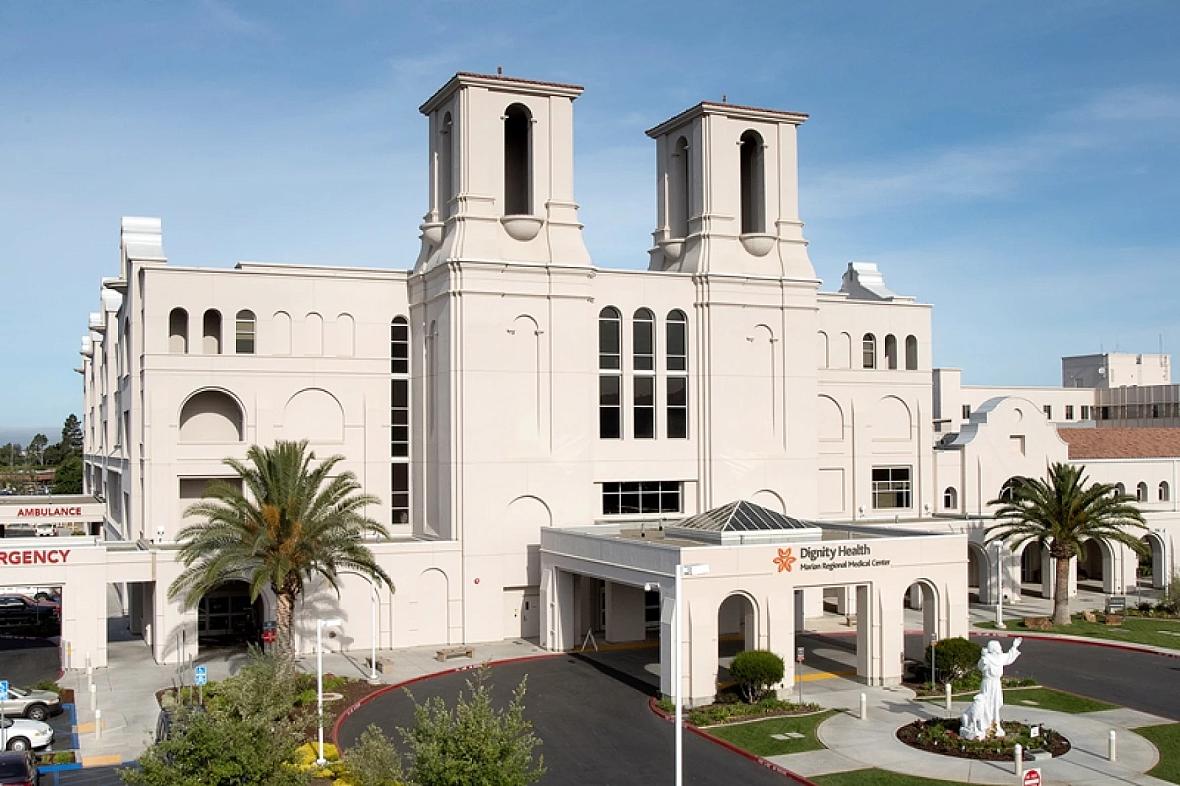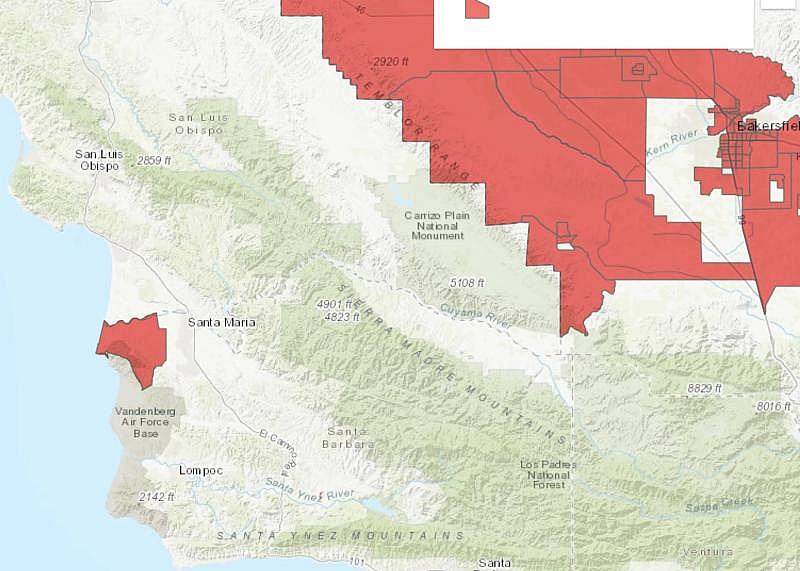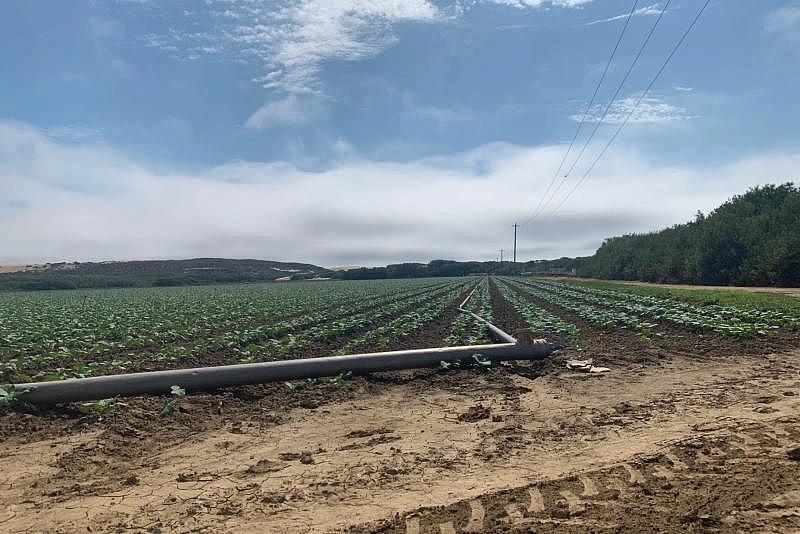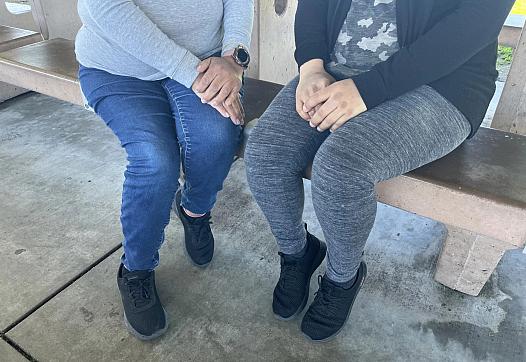Clouded in Crisis: The battle to access healthcare amid an ongoing doctor shortage
This story was originally published in KCBX with support from the 2022 California Fellowship.

Marian Regional Medical Center is the closest hospital for communities on the Nipomo Mesa.
Dignity Health /
Exposure to poor air quality on the Nipomo Mesa has long been a public health issue for people in South San Luis Obispo County.
The more people are exposed to poor air quality on the Mesa, the sicker they become over time — dealing with allergy symptoms, breathing issues and, for some, even lung disease.
In the last article in this series, we explored the barriers that keep people from getting to the doctor's office — like Maria, whose name we're keeping private because of the sensitivity of the topic.
We met Maria in the first story in this series. She's lived on the Mesa for 25 years, and said making the time to access healthcare can be a near impossibility for many people in her community. She said it’s often financially difficult as well.
“The only problem with this is [if] you’re more sick, you need to go more frequently [to] the doctors and [buy] medications,” Maria said.
Even allergy medications, she said, can get really expensive.
“Many people go to the store and buy anything for allergies," Maria said. "But sometimes, you need [to buy] more and more and more and [people] don’t save money…”
It’s only getting harder to get in to see a doctor in California. The state, as a whole, is seeing a worsening shortage of primary care physicians paired with a growing need for care.

According to a 2017 study out of UC San Francisco’s Healthforce Center, the state will likely continue to fall very short of meeting the growing demand for primary care in the next decade. The Central Coast is expected to see some of the worst shortages.
“In terms of the need, this area — our community — needs an additional 58 primary care physicians,” said Dr. Will Chung from Santa Maria’s Marian Regional Medical Center.
Marian is the hospital closest to the community on the Nipomo Mesa. Dr. Chung said that number of needed physicians is based on Santa Maria’s population size.
He said this lack of practicing physicians means patients seeking care face long wait times.
“[They wait] months — probably three to six months to get in to see a primary care doctor as a new patient," Dr. Chung said. "This is a problem for every single person out there in our community.”
The San Luis Obispo County Public Health Department said the physician shortage is multifaceted. Public Health Officer Dr. Penny Borenstein attributed part of it to the lack of a teaching hospital in SLO County and part of it to financial stresses.
“I think to some extent [it's] because we don’t have a teaching hospital and we don’t have a residency pipeline," Dr. Borenstein said. "And just because it’s really high cost of living here.”
Dr. Borenstein said it’s hard for people to get established on the Central Coast. It’s a small medical market and finding employment can be tough in general.
“Especially right out of residency or if people are moving here, sometimes a spouse having a job as well is a challenge,” Dr. Borenstein said.
Marian Hospital in Santa Barbara County does have a residency program, meant to help turn out primary care physicians that will later practice in the area. Dr. Chung leads that program and said it is helpful in that pursuit.
But only about half of the six graduates per class end up staying in the Santa Maria area.
“That’s just not enough," Dr. Chung said. "That’s gonna be a drop in the bucket.”
Dr. Chung echoed the concern about financial challenges for new practicing physicians. He said a lot of that begins in medical school.
“Many of these graduates come out of school with two, three, four hundred thousand dollars in debt," Dr. Chung said. "I mean, that’s a mortgage.”

Benjamin Purper / Outdoor workers — especially people working in agriculture on the Nipomo Mesa — are often more heavily exposed to air pollution than people who work indoors.
He said it’s also hard for doctors to justify the high home prices on the Central Coast when they can make similar salaries in places that are less expensive to live.
It’s even more challenging for doctors serving low-income patients with Medi-Cal. The health coverage offers low reimbursement rates for physicians in rural areas, further driving them away from practicing in marginalized communities.
Plus, the primary care workforce is aging out — with not enough new MD's completing residency programs to replace physicians who are approaching retirement.
“We’re burning the candle at both ends when it comes to primary care, and that’s why there’s a huge shortage — not just here in our area, but across the country,” Dr. Chung said.
He said if this shortage doesn't improve, the health of people on the Mesa will keep getting worse.
"This will mean more and more people in the emergency room — and our emergency rooms are already impacted," Dr. Chung said. "More and more people in the hospital, and ultimately more and more people dying from a preventable disease.”
Dr. Chung said healthcare communities locally and statewide are actively talking about ways to fix this issue, although there is no silver bullet.
But local agencies and community groups are focusing on preventative care on the Mesa. In the fourth and final article in this series, we'll look into what is being done to help keep people from getting sick in the first place.

